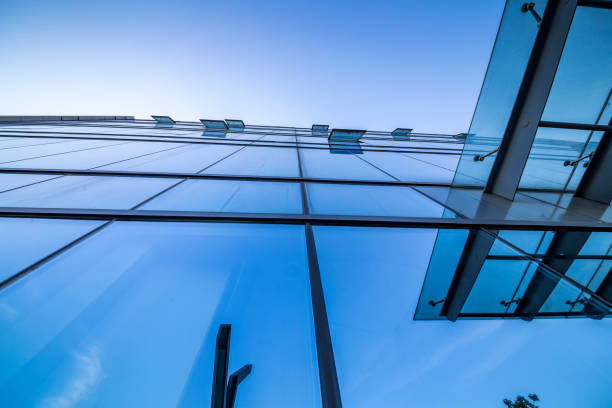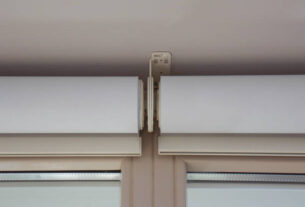Selecting the right glazing for a new build property is a pivotal decision that affects not just the building’s aesthetic but also its environmental footprint, comfort levels, and long-term viability. As modern construction leans towards sustainability and energy efficiency, the role of windows and doors—collectively referred to as glazing—becomes increasingly critical. Here, we delve into the multifaceted considerations for choosing the ideal glazing solutions, ensuring they align with both the occupants’ needs and broader environmental goals.
Page Contents
Energy Efficiency
In an age where energy conservation and sustainability are paramount, the energy efficiency of glazing cannot be overstated. High-performance glazing significantly reduces the energy required for heating and cooling, lowering utility bills and contributing to a more sustainable future. Key metrics include the U-value, which measures thermal transmittance, and the Solar Heat Gain Coefficient (SHGC), which indicates how much solar radiation is admitted through the glass. Glazing that boasts low U-values and optimal SHGC ratings can help maintain comfortable indoor temperatures year-round, reducing the need for artificial heating and cooling.
Aesthetic Appeal
Glazing is a dominant feature in any property’s design, influencing both its external appearance and interior ambiance. The choice of window and door styles, frame materials, and glass types should harmonize with the architectural vision, enhancing the building’s character and appeal. Beyond aesthetics, the spatial orientation of windows can maximize natural lighting, reducing reliance on artificial light and inviting warmth into living spaces. The interplay of light and space through strategic glazing can transform interiors, creating vibrant spaces that connect occupants with the outdoors.
Acoustic Insulation
In bustling urban environments or near transportation hubs, noise pollution can significantly impact the quality of life. Advanced glazing solutions offer superior acoustic insulation, shielding interiors from external noise. Double or triple glazing, especially with laminated glass, can attenuate sound transmission, providing a tranquil indoor environment conducive to relaxation and concentration. This consideration is crucial for residential buildings, schools, and healthcare facilities, where noise reduction is essential for comfort and well-being.
Security
Security considerations are paramount, as windows and doors are common points of entry for unauthorized access. Enhanced security features in glazing—such as toughened glass, multi-point locking systems, and internal beading—can deter break-ins and ensure the safety of occupants and assets. It is essential to balance security with emergency egress requirements, ensuring that windows and doors provide safety without compromising the ability to exit in an emergency.
Durability and Maintenance
The longevity and ease of maintenance of glazing materials affect not only their cost-effectiveness but also their environmental impact. Materials like aluminium and uPVC offer durability against the elements and require minimal upkeep, retaining their appearance and functionality over time. Furthermore, considering the ease of cleaning and the potential need for future repairs or replacements is essential. Opting for materials and designs that facilitate maintenance can significantly reduce the long-term costs and environmental impact of glazing.
Ventilation
Adequate ventilation is vital for maintaining indoor air quality and preventing issues like dampness and mold. Windows that provide efficient ventilation—such as those with tilt-and-turn mechanisms or integrated trickle vents—can enhance air circulation without compromising security or energy efficiency. In designing a new build, consider how window placement and operability can contribute to a healthy and comfortable indoor environment, promoting well-being for occupants.
Compliance with Building Regulations
Adhering to local building regulations and standards is non-negotiable. These regulations may cover aspects such as energy efficiency, safety, accessibility, and environmental impact. Ensuring that your glazing choices are compliant not only avoids legal complications but also guarantees that the building performs to a certain standard. Regulations are often updated to reflect new technologies and environmental priorities, so staying informed and consulting with professionals is crucial.
Final Thoughts
Choosing glazing for a new build property involves a complex interplay of aesthetics, functionality, and compliance. The decisions made can significantly impact the property’s environmental footprint, operational costs, and the occupants’ comfort and well-being. By prioritizing energy efficiency, acoustic insulation, security, and durability, and by carefully considering aesthetic and ventilation needs, you can ensure that your glazing solutions enhance the building’s performance and appeal. Collaborating with architects, builders, and glazing specialists can provide valuable insights and access to the latest innovations in glazing technology, helping to create spaces that are not only beautiful but also sustainable and conducive to good health. As we move towards a more sustainable future, the choices we make in glazing today will play a pivotal role in shaping the living environments of tomorrow.

Lois Lane is a professional blogger and a seasoned Content writer for wellhousekeeping.com. With a passion for simplifying complex Home Decor topics, he provides valuable insights to a diverse online audience. With four years of experience, Lois has polished his skills as a professional blogger.




